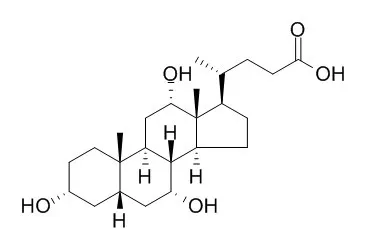The cause of Cystic fibrosis liver disease (CFLD), is unknown. It is well recognized that hepatic exposure to hydrophobic bile salts is associated with the development of liver disease. For this reason, we hypothesize that, CFTR dependent variations, in the hepatic handling of hydrophobic bile salts, are related to the development CFLD.
METHODS AND RESULTS:
To test our hypothesis we studied, in Cftr-/- and control mice, bile production, bile composition and liver pathology, in normal feeding condition and during cholate exposure, either acute (intravenous) or Cholic acid (three weeks via the diet). In Cftr-/- and control mice the basal bile production was comparable. Intravenous taurocholate increased bile production to the same extent in Cftr-/- and control mice. However, Cholic acid cholate exposure increased the bile flow significantly less in Cftr-/- mice than in controls, together with significantly higher biliary bile salt concentration in Cftr-/- mice. Prolonged cholate exposure, however, did not induce CFLD like pathology in Cftr-/- mice. Cholic acid cholate exposure did induce a significant increase in liver mass in controls that was absent in Cftr-/- mice. Cholic acid cholate administration induces a cystic fibrosis-specific hepatobiliary phenotype, including changes in bile composition. These changes could not be associated with CFLD like pathological changes in CF mouse livers. However, Cholic acid cholate administration induces liver growth in controls that is absent in Cftr-/- mice.
CONCLUSIONS:
Our findings point to an impaired adaptive homeotrophic liver response to prolonged hydrophobic bile salt exposure in CF conditions. |






 Cell. 2018 Jan 11;172(1-2):249-261.e12. doi: 10.1016/j.cell.2017.12.019.IF=36.216(2019)
Cell. 2018 Jan 11;172(1-2):249-261.e12. doi: 10.1016/j.cell.2017.12.019.IF=36.216(2019) Cell Metab. 2020 Mar 3;31(3):534-548.e5. doi: 10.1016/j.cmet.2020.01.002.IF=22.415(2019)
Cell Metab. 2020 Mar 3;31(3):534-548.e5. doi: 10.1016/j.cmet.2020.01.002.IF=22.415(2019) Mol Cell. 2017 Nov 16;68(4):673-685.e6. doi: 10.1016/j.molcel.2017.10.022.IF=14.548(2019)
Mol Cell. 2017 Nov 16;68(4):673-685.e6. doi: 10.1016/j.molcel.2017.10.022.IF=14.548(2019)